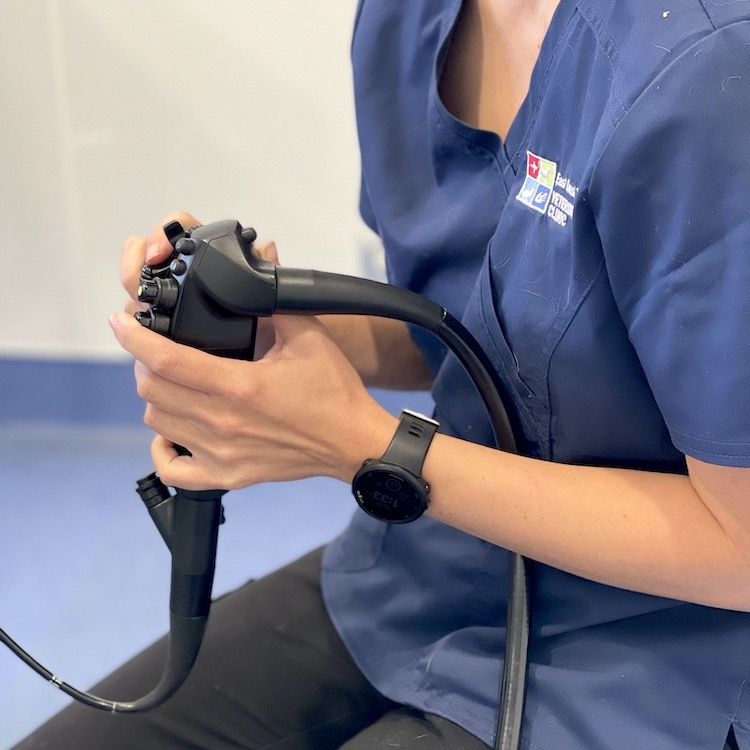Nasal Endoscopy (Rhinoscopy) This is a very common reason for endoscopy as problems within the nose can remain a mystery without this investigation. Common reasons include nasal discharge, sneezing, gagging, nasal bleeding etc. A combination of flexible and rigid scopes allow a full examination of the nasal cavity.
Gastrointestinal endoscopy This minimally invasive technique is great for investigating vomiting and regurgitation, swallowing issues etc. It is commonly used to remove foreign objects or take biopsies.
Lower airway endoscopy ( Bronchoscopy ) This option is for examining the larynx, windpipe and main airways in the lungs. It can be useful when assessing chronic cough and occasionally for removing foreign objects.
Bladder endoscopy ( Cystoscopy ) Cystoscopy allows us to see inside the vagina, urethra and bladder. It can be used for incontinence, persistent cystitis or blood in the urine.
Ear canal endoscopy ( Videootoscopy ) This technique has provided a paradigm shift in how we can manage and improve outcomes in selected cases of persistent ear disease in pets. The entire ear canal can be viewed in great detail which allows deep cleaning, diagnosis and treatment. It is most commonly used when one ear has unresponsive disease. It can provide removal of wax plugs, foreign material, polyps, diagnosis of tumours and middle ear cleaning.
